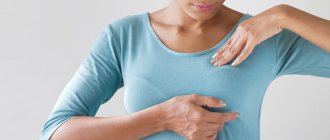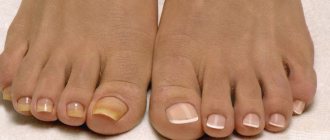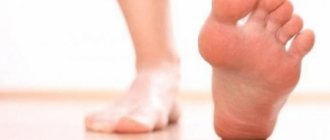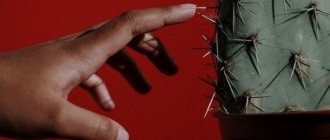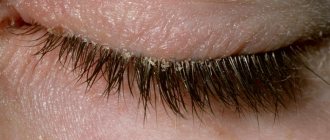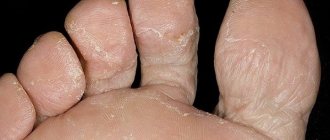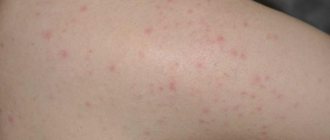Yellow palms and soles may indicate the presence of a serious pathology in the human body.
Skin is an organ of the human body that performs a number of functions: secretory, thermoregulatory, barrier, etc. This organ is an important receptor field for the human body.
Read another article on our website on the topic: “What can a face say about health?” . You will learn what wrinkles, acne, dark circles, pale, yellow skin indicate.
Skin color is affected by the amount of pigment produced by melanocytes. The appearance of a yellow tint of skin on the palms and soles indicates the presence of diseases. This is one of the symptoms of anemia, problems with the adrenal glands, hypothyroidism, liver disease, etc. However, in most cases, it is due to habits or diet. Below we will tell you in more detail why the skin may turn yellow. Read on.
Yellow palms and feet, soles in a child: causes
If your baby's feet, soles and palms turn yellow, this may be a symptom of carotene jaundice. It can be caused by excessive consumption of citrus fruits, apples, persimmons, carrots and apricots. Vegetables can also cause a problem: cabbage, zucchini, tomatoes and pumpkin, since they contain a high content of carotene. This phenomenon is not dangerous. Over time, the child’s body will adapt to take enough vitamin A from foods and the skin will no longer acquire a yellowish tint.
- Sometimes pigmentation appears as a result of Hepatitis B, Gilbert's syndrome or inflammatory processes in the gallbladder .
- Also, similar phenomena occur due to diabetes and kidney problems .
- Additionally, you can undergo examination by an endocrinologist or contact an infectious disease specialist or hematologist.
- It is especially important to consult a doctor if, in addition to yellowing of the skin, other symptoms are observed: yellow whites of the eyes, abdominal pain.
What to do? It is necessary to eliminate yellow spots after contacting a specialist and making an accurate diagnosis. Treating children on your own without knowing the exact diagnosis with medications or using traditional methods is dangerous. The only thing you can do is:
- Change your diet. This applies not only to children, but also to nursing mothers.
- Strictly follow the doctor's recommendations if the cause is illness.
If the examination of the child did not reveal any diseases, you just need to wait. Over time this will go away on its own.
Important: Follow preventive measures and assess the child’s condition. If you find problems, be sure to consult a doctor and do not self-medicate.
The effect of carotene on skin color
Excessive consumption of certain fruits, vegetables or root vegetables can also cause yellow palms. Review your diet, maybe lately you have become interested in eating carrots, pumpkin, squash or tangerines.
When consuming products containing keratin, most of the substance is absorbed into the blood and distributed throughout the human body. Due to the fact that the skin of the palms contains less of the coloring substance melanin, an excessive amount of keratin in the body may manifest itself as yellowish palms.
A yellow spot has appeared, a callus on the palm - what does it mean: reasons
A yellow spot has appeared
Yellow, keratinized spots (similar to calluses) on the palms may indicate the disease Keratoderma . This is a polygonal papule slightly rising above the level of healthy skin. Its diameter is 3 mm . In the affected areas, the skin becomes yellow and rough. The course of the disease depends on its type. Specialists diagnose the patient. The treatment process is quite long.
The reason for its appearance has not been fully studied. As for genodermatoses, this disease occurs as a result of mutation of genes that directly affect the processes of keratinization. Keratoderma can occur as a result of impaired synthesis of vitamin A in the body.
In dermatology, this disease is divided into local and diffuse. In the latter case, complete damage to the skin of the palms is noted. Local lesions are characterized by partial lesions. The most common diffuse keratodermas caused by gene mutations include:
- Keratoderma Meleda . Hereditary keratosis, manifested by scaly erythema.
- Unna-Tost keratoderma . The disease is inherited. Newborn babies develop slightly scaly spots.
- Papillon-Lefevre keratoderma . The cause is often thyroid dysfunction. You need to contact an endocrinologist.
There are other, most harmless reasons for the appearance of yellowness on the hands or feet. Read on.
Read also
Fibromyalgia
“What is well recognized is well treated,” Hippocrates once said long ago and he was absolutely right, because only by understanding the cause and nature of the disorder in the human body can one successfully get rid of...
Read more
Arteritis
Swelling and swelling of the arteries in the temple can be caused by temporal arteritis, a condition in which the temporal arteries, which supply blood to the skull and brain, become damaged and inflamed. This…
More details
Joint pain and swelling, rheumatoid arthritis
Pain and swelling of the joints are a common cause of illness and impairment of the quality of life of patients. In this regard, the following types of joint diseases are distinguished: arthrosis (wear and destruction…
More details
Bursitis
Bursitis is a painful condition that affects small fluid-filled sacs—bursae—that cushion the movement of bones, tendons and muscles near joints. Bursitis occurs when...
More details
Coxarthrosis of the hip joint
Clinical manifestation of coxarthrosis of the hip joint Arthritis can easily develop in the hip joint, which under certain conditions can lead to damage to the articular cartilage. The most common...
More details
Yellow palms from tangerines: what to do?
Palms may turn yellow as a result of eating too many tangerines. These fruits are rich in carotene. As a result of its excess in the body, the palms begin to turn yellow. What to do?
- This can be avoided if you do not abuse the fruits.
- It is recommended to eat no more than 4 pieces per day for adults. The norm for children under 3 years old is 2 pieces per day .
- During lactation, nursing mothers will have to give up tangerines.
- During pregnancy, the fruit can be consumed, but not more than 1 piece per day .
If your palms have turned yellow due to consuming excess amounts of tangerines, you can get rid of the problem by stopping consuming the fruit for 1-2 months.
False jaundice
If, during a visit to a therapist, you complained about yellow palms, the following entry may appear in your medical record: “False jaundice.” What does it mean? First of all, there is no need to be scared. Unlike real jaundice, this disease does not threaten you in any way: with false jaundice, a person only develops external symptoms of the disease (in particular, the color of the skin changes). The internal organs are not affected at all. It's likely that your yellow skin is due to eating too many carrots and oranges (perhaps you're on a special diet?). Carotene accumulates in the blood.
One finger turned yellow: reasons
This problem is typical for smokers. Tobacco smoke, which contains nicotine, is absorbed into the skin for a long time. As a result, one or a couple of smoker's fingers turn yellow over time.
As a rule, the shade is changed by the index and middle fingers, which are in direct contact with the cigarette, and only on one hand. Also, yellowed fingers in smokers indicate the presence of health problems:
- Asthma
- Chronic bronchitis
- Lung cancer, nicotine increases the risk of this pathology
- Metabolic disorder
- Problems with potency
- Vascular diseases of the extremities , this threatens their amputation
A yellowed finger is a signal of serious problems in the body. You need to quit smoking immediately.
Yellowness is a sign of a serious illness
Yellowness of the palms can hide serious diseases, such as infectious jaundice can be caused by hepatitis B, A, C. In the acute form, the body temperature may rise, nausea, and abdominal pain may appear.
Another serious disease that causes yellow palms is anorexia nervosa. The disease is accompanied by a number of symptoms:
- fear of gaining weight;
- obsessive desire to lose weight;
- disturbances in a person’s consciousness about his own appearance (even with exhaustion of the body, a person considers himself very fat);
- rapid weight loss (15% of usual body weight);
- changes in skin color, yellowing of the palms;
- aggressiveness;
- drowsiness, fatigue.
This disease most often occurs in adolescents and women, which can be triggered by severe shock. The disease initially manifests itself in a sharp change in behavior and refusal to eat. Refusal of normal food provokes the development of other, more complex diseases. In this case, it is important to identify the problem in time and contact a specialist.
How to treat if the skin on your hands and feet turns yellow?
Before starting treatment, if the skin on your hands and feet has turned yellow, you need to find out the reasons for the appearance of the spots. To get rid of them, you need:
- Stop drinking alcohol and smoking if this is the reason.
- Make your diet correctly . You need to eat less vegetables and fruits that contribute to the problem. If the cause is physiological jaundice , you need to keep the situation under control and promptly consult a doctor if unpleasant symptoms appear.
Often, specialists use a fluorescent lamp, which allows you to easily and quickly remove excess bilirubin from the body. Doctors also carry out complex therapy if the cause is liver pathology. Potent drugs are prescribed that quickly relieve the problem.
There is no need to ignore discoloration on the skin of yourself or your loved ones. Yellow spots may indicate serious problems in the body that need to be treated urgently.
Diagnostic methods
To understand the true cause of yellowing of the palms, a comprehensive diagnosis will be required, which begins with interviewing the patient.
The doctor will ask about foreign travel, drug or alcohol use, changes in the color of urine or stool, and other symptoms. Next is prescribed:
- Analysis of urine . Helps to separate hepatitis from other diseases, as well as to recognize the form of jaundice.
- Blood chemistry . Taken from a vein to assess the condition of the pancreas, kidneys, liver, heart and gall bladder.
- Liver tests . Necessary for detecting alcoholic liver disease, hepatitis and cirrhosis. In these diseases, special enzymes are found in the blood.
- Ultrasound . Performed to visualize the liver.
- CT and MRI . They allow you to create a detailed image of the organ and identify the slightest structural changes.
- RCP . Diagnostics performed with an endoscope. Necessary to determine the patency of the ducts of the organ.
If cancer or cirrhosis is suspected, a liver biopsy is prescribed under local anesthesia.
Yellow palms of a child
Parents' concerns about their child are quite natural, especially when it comes to the baby's health. But there is no need to sow panic prematurely, because yellowed palms of a baby most often do not promise serious health problems.
A baby may have yellow palms for several reasons:
- hereditary feature;
- carotonemia - occurs as a result of excessive consumption of foods containing carotene. In the human body, carotenoids are processed into vitamin A. To eliminate the problem, you should change the baby’s diet.
But besides the harmless causes of yellow palms, there are other, more serious ones:
- hyperbilirubinemia - accompanied by a significant increase in bilirubin in the blood. The disease is manifested by a yellowish tint to the skin and a change in the color of the mucous membranes;
- liver problems;
- problems with bile.
To rule out complex diseases, take your baby to the pediatrician and get all the necessary tests.
